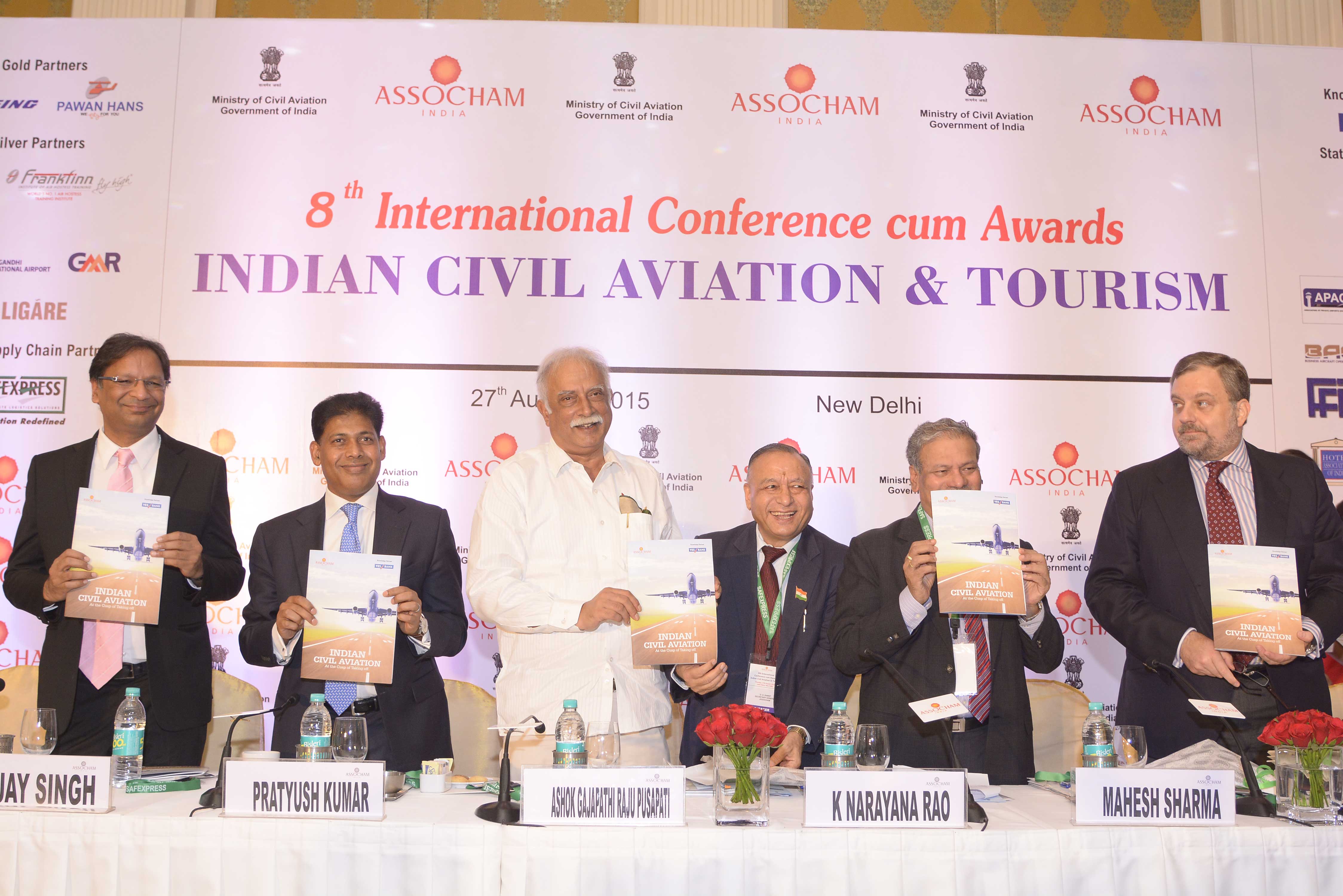“India has very turbulent skies and many airlines have cracked and gone into oblivion. The aviation in India is in ICU and we are trying to pull it out of it. The sector has been inadvertently put into this ICU. Government can hold hands but only to a limit. Government’s policy can be a catalyst but making the policy work is the job of all stakeholders,” stated Ashok Gajapathi Raju Pusapati, Minister of Civil Aviation, while addressing the inaugural session of the ASSOCHAM’s 8th International Conference-cum-Awards on Indian Civil Aviation & Tourism.
While most of the scheduled and non-scheduled airlines are facing financial strain, existing fiscal regime including Aviation Turbine Fuel (ATF) taxes need urgent rationalisation. He informed that the Ministry has been engaging with State Governments to reduce VAT on ATF. It was brought down in an Indian state by one per cent and flights doubled in a year, which meant more traffic and more revenue and this could be replicated in all states.
As the aviation will grow so will tourism which is a major revenue generator for the nation. The two industries go in congruence with each other as air transport is pivotal to Indian tourism. Minister of State for Civil Aviation Dr Mahesh Sharma stressed on the role of aviation which he feels is to create a cheap media for travel to enhance tourism in the country. And this will be to achieve one per cent of world tourism, which is the status quo in India. “Good connectivity by air will result into better tourism. Steps are being taken to develop a number of no-frills airports across the country. Also the development of air cargo is very important and steps are being taken to reduce the dwell time. Air freight stations are being planned along with reduction of time taken in procedural formalities,” he said.

At its present compounded annual rate of growth – 5.5 per cent – cargo demand in India is expected to boost the airfreight market to 2.8 million tonnes by 2018, according to a recent report by market research analysts at Frost & Sullivan, a market research company. Most of this growth, however, will benefit foreign-owned rather than domestic carriers. India’s air traffic is concentrated at few major airports, with most of the Tier II cities having limited facilities. This impedes the movement of air cargo between these cities and gateway airports leading to lower cost efficiencies.
Some important civil aviation issues like determining the tariff for the aeronautical services, the capital expenditure incurred and timely investment in improvement of airport facilities, fixing the amount of the Development Fees in respect of major airports, determining the amount of the Passengers Service Fee levied under rule 88 of the Aircraft Rules, 1937 made under the Aircraft Act, 1934 are also under the purview of the Government. It monitors these through the Airports Economic Regulatory Authority (AERA) which is a statutory body constituted under the Airports Economic Regulatory Authority of India Act, 2008 (27 of 2008) notified vide Gazette Notification dated 5th December, 2008.
S Machendranathan, Chairperson, AERA stated that the capital expenditure should be kept to the minimum and expansion plans of airports should be chalked out economically. He hoped to see more competition in the business between service providers, which would eventually result into a healthy growth of the sector.
India’s civil aviation market is today among the fastest growing in the world, but helicopter use remains very limited. From the time the first civil helicopter was flown in India in November 1953 and up to 1986 the commercial use of helicopters in India was limited to small aviation companies involved in communication and crop spraying. The formation of the Helicopter Corporation of India in 1986 (Later Pawan Hans Helicopters Ltd) provided the first boost to the civil helicopter industry in India, which now holds and operates the largest fleet in the country.

Dr BP Sharma, Chairman & Managing Director, Pawan Hans Limited informed that the Indian helicopter industry is less than one per cent of the total helicopters of the world and there is the availability of one helicopter for 2.8 million people. “The helicopter industry has not grown the way it should have. There are 280 helicopters in India including the ones in general aviation. Out of these 70 per cent are with the corporate, 15 per cent with oil & gas industry, one per cent for emergency medical evacuation, one per cent for law maintenance, 10 per cent for VIP travel and two per cent for training purposes. Pawan Hans has 21 operation bases and 53 choppers. The draft aviation policy is in the final stage and has the concept of creating a heli-hub each in the four regional centres. Each hub shall have a passenger terminal, a MRO area and skill development facility. Also as a part of the policy is the concept of developing helipads and heliports,” he added.
General aviation and lack of fixed base operations in India has always been a matter of concern for the sector, which has around three times the fleet size compared to commercial airlines in India. It still does not have a dedicated policy and regulatory framework. Referring to the miniscule general aviation industry in India, Mr Raju said the Government needs to keep its activities going and is open to suggestions.
Spanish Ambassador to India Gustavo de Arestegui, who was the keynote speaker at the conference, hoped that the e-visa scheme for Spanish tourists’ coming to India should be through soon, which would increase the flow of traffic towards India. Another major factor which is being looked into seriously is direct air connectivity between the two countries which as of now does not exist.
The ASSOCHAM-YES Bank Knowledge Report, that outlines the future roadmap for transforming Indian skies through a comprehensive development policy over the next 20 years, was released at the event.
|